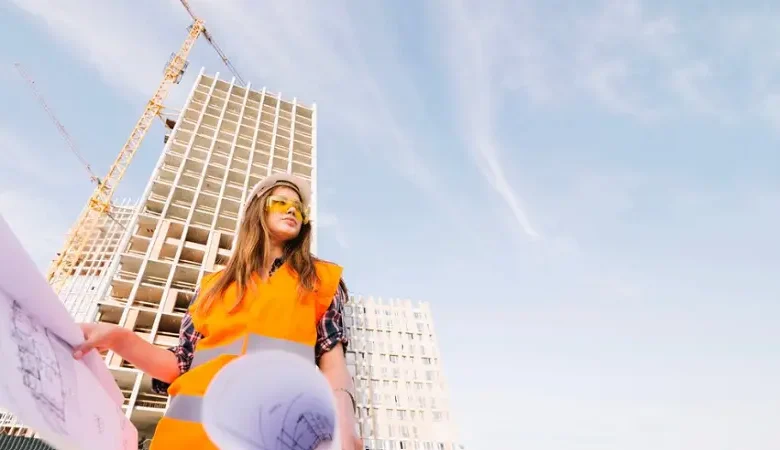Overcoming Urban Construction Challenges: 5 Strategies Engineering & Construction Firms Use in City Projects

Urban construction is a feat of ingenuity, requiring specialized approaches to navigate the dense landscapes, strict regulations, and complex logistical challenges of city projects. Engineering and construction firms working in urban settings must adopt innovative strategies to deliver projects successfully, efficiently, and safely. From effective coordination to cutting-edge technology, here’s how firms handle the unique demands of city construction.
1. Mastering Logistics in Tight Spaces
Urban construction means working in confined spaces, often surrounded by bustling streets, crowded buildings, and limited staging areas. Coordinating logistics in these tight spaces is essential to keep projects running smoothly without disrupting the surrounding community.
Careful Staging and Planning
One of the primary solutions is meticulous staging and planning. Materials and equipment are carefully scheduled to arrive just in time, reducing the need for on-site storage and keeping public spaces clear.
- Just-in-Time Deliveries: This approach minimizes clutter, allowing for efficient use of space.
- Multifunctional Equipment: Specialized equipment is often chosen to handle various tasks, saving both space and resources.
Fun Fact: Some urban construction sites use underground staging areas, where materials are stored below ground to free up surface-level space!
2. Noise and Environmental Controls: Ensuring Community Harmony
Urban projects are often surrounded by residential or commercial buildings, making noise and pollution management crucial. Implementing strict controls helps firms minimize their environmental footprint and maintain good relations with neighboring communities.
Innovative Soundproofing and Dust Suppression
Construction firms use soundproofing barriers and dust suppression technologies to reduce the impact on nearby residents and businesses. This often includes temporary structures that shield surrounding areas from the noise and debris of active construction.
- Sound Barriers and Panels: These temporary structures absorb noise, protecting the community from disruptive sounds.
- Dust Suppression Sprays: Regularly sprayed water and mist systems help keep dust levels low, improving air quality on and around the site.
Did You Know? Some cities have strict “quiet hours” for construction, typically during early morning and late evening, to reduce disruption to the community.
3. Navigating Zoning and Regulatory Hurdles
In densely populated cities, zoning laws and regulations are often intricate, requiring construction firms to stay current and proactive to remain compliant. At https://vertexeng.com, every stage of a project may involve navigating a complex set of regulations to ensure safety and legality.
Dedicated Compliance Teams
Construction firms often have dedicated teams who specialize in understanding local codes and regulations. These teams work to secure the necessary permits, ensuring the project aligns with environmental and zoning requirements.
- Permitting Specialists: These experts handle the legal groundwork, securing the necessary permissions before any construction begins.
- Constant Monitoring and Adaptation: As regulations can change over time, these teams stay updated to ensure ongoing compliance.
Interesting Fact: In some cities, “air rights” allow companies to build vertically by purchasing the air space above neighboring properties, adding extra space to their designs.
4. Leveraging Technology for Efficiency and Precision
Urban construction increasingly relies on technology to solve logistical and spatial challenges. Innovations like Building Information Modeling (BIM), drones, and 3D printing are now essential tools for complex urban projects.
High-Tech Tools for Smart Building
Technology provides valuable data and insights that help firms plan and execute projects with precision. From drones that monitor progress to digital models that optimize space, technology transforms city construction from chaotic to controlled.
- Building Information Modeling (BIM): BIM allows teams to create digital representations of the project, ensuring every phase aligns before construction begins.
- Drones and Site Scanning: Drones capture real-time visuals of the site, allowing managers to monitor progress remotely.
- 3D Printing for Custom Components: Custom parts can be printed on-demand, saving time and ensuring exact specifications.
Fun Fact: Drones can scan large construction sites in minutes, offering a bird’s-eye view that helps detect issues before they escalate.
5. Prioritizing Safety and Risk Management
Safety is critical in any construction project, especially in urban settings where tenant improvement (TI) work requires extra precautions due to the dense population and high pedestrian traffic. Firms implement stringent safety protocols to protect workers and the public alike.
Comprehensive Safety Protocols
Urban construction sites must be carefully secured and regularly inspected to mitigate risks. Firms employ advanced safety gear, regular inspections, and protocols designed to keep everyone safe.
- Worker Safety Gear: Enhanced personal protective equipment (PPE) is used to safeguard workers in tight, high-risk environments.
- Risk Assessment and Safety Training: Teams undergo intensive safety training tailored to the project’s unique risks, such as managing high-rise construction or handling hazardous materials.
Did You Know? “Netting” is often installed around tall urban buildings under construction to prevent falling debris, protecting people below from potential hazards.
A Future Built on Innovation and Expertise
Construction firms tackling urban projects continue to adapt and innovate, addressing the unique challenges of dense cityscapes. As urban environments grow, the demand for smart solutions—like modular buildings and even vertical cities—will only increase. By mastering logistics, environmental controls, regulatory compliance, technology, and safety, construction firms are building safer, more efficient cities for the future.
Urban construction isn’t just about putting up buildings; it’s about creating spaces that integrate seamlessly into the existing fabric of the city. With every project, these firms lay the groundwork for cities that can withstand the demands of tomorrow.
